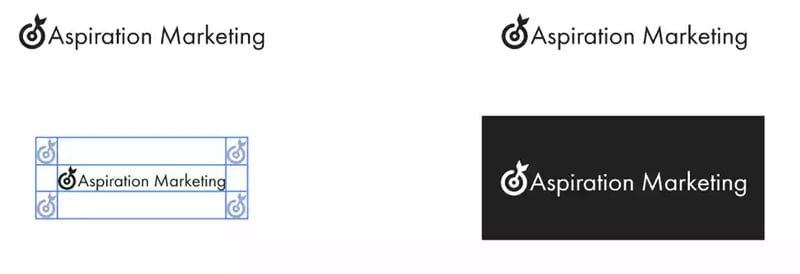What Does it Mean to Have Branding Guidelines?
In today's fiercely competitive market, establishing a strong and recognizable brand is crucial for businesses aiming to thrive and stand out. Branding guidelines are fundamental in achieving this goal by providing a blueprint for creating a consistent and cohesive brand identity.
From defining key components to outlining the process of developing practical branding guidelines, we'll explore how these guidelines can help establish trust, enhance brand recognition, and streamline decision-making processes.
What are Branding Guidelines?
"Branding is the process of connecting good strategy with good creativity." Marty Neumeier
Branding guidelines, also known as brand style guides or manuals, serve as rules and instructions that govern a brand's visual and verbal representation across various marketing channels. They provide a framework for consistently portraying a brand's identity, values, and messaging to create a cohesive and memorable brand experience for the target audience. These guidelines ensure that all marketing materials, communications, and touchpoints accurately reflect the brand's personality, values, and visual identity. Additionally, branding guidelines are essential to recruitment marketing strategies, helping prospective employees build brand awareness.
75% of consumers say they are more likely to do business with a company with a strong brand, and 57% say they are more likely to increase how much they spend with a brand when they feel connected. [Sprout Social]
Key Components
-
Logo usage: Guidelines for the correct usage, placement, and sizing of the brand logo. This ensures the logo is consistently displayed across different mediums and maintains its visual integrity.
-
Typography: Specifications for selecting and using fonts that align with the brand's tone and personality. This includes guidelines for font sizes, spacing, and formatting to maintain consistency in written communications.
-
Color palette: Defining the brand's primary and secondary color palette and guidelines for their application. This includes specifying primary brand colors for logos, backgrounds, and text and complementary colors for visual elements.
-
Visual style: Instructions for visual elements such as photography, illustrations, icons, and graphics. These guidelines define the preferred style, composition, and treatment of visual assets to ensure a cohesive brand aesthetic.
-
Tone of voice: Guidance on the brand's personality and voice when communicating with the target audience. This includes instructions on language, writing style, and the overall tone of messaging, whether formal, friendly, professional, or playful.
Role in Establishing Brand Identity
Branding guidelines are vital in establishing and maintaining a consistent brand identity. By defining and standardizing visual and verbal elements, these guidelines ensure that every interaction with the brand aligns with its core values and personality. Consistency in branding helps build brand recognition, trust, and customer loyalty.
When a brand's visual elements, such as logos, colors, and typography, are consistently applied across different marketing channels, it becomes easily identifiable. This consistency allows customers to associate specific visual cues with the brand, enhancing its memorability and differentiation in a crowded market.
Similarly, a well-defined tone of voice and messaging style help create a consistent brand personality. When customers encounter a brand's content on a website, social media, or advertising campaigns, they should experience a unified and recognizable voice. Consistency in tone of voice establishes familiarity and reinforces the brand's values, cultivating a deeper connection with the target audience.
Benefits of a Well-Defined Branding Guideline
Having a well-defined, unique brand style guide and brand identity guidelines offers numerous benefits for businesses as marketer/seller as well as employer:
-
Consistency and coherence across marketing channels: Branding guidelines ensure that all marketing materials, both online and offline, adhere to the same visual and verbal standards. This consistency enhances brand recognition and reinforces the brand's identity, regardless of where customers encounter it.
-
Enhanced brand recognition and recall: Consistent application of visual elements, such as logos, colors, and typography, helps customers recognize and remember the brand. When brands use these elements consistently across various touchpoints, it creates a strong visual association with the brand, making it more memorable.
-
Establishing trust and credibility: Consistency in branding instills customer confidence and trust. When they consistently encounter a brand that maintains a cohesive identity, it signals professionalism, reliability, and authenticity. This trust and credibility can influence purchasing decisions, foster long-term customer loyalty, and even serve as a recruitment tool.
-
Streamlined decision-making: Branding guidelines serve as a reference point for marketing teams and designers, streamlining the decision-making process when creating new marketing materials. They eliminate guesswork and ensure that all materials align with the brand's visual and verbal identity, saving time and effort in the creative process.
By adhering to well-defined branding guidelines, businesses can establish a strong and recognizable brand presence, differentiate themselves from competitors, and build lasting connections with their target audience.
How to Develop a Branding Guideline
Developing effective branding guidelines is crucial in creating a consistent and cohesive brand identity. This process involves understanding your brand identity and values, defining visual elements and design guidelines, establishing tone of voice and messaging, and outlining brand guidelines for various marketing channels.
1. Understand Your Brand Identity and Values
Before creating branding guidelines, it's essential to have a clear understanding of your brand identity and values. Start by defining your brand's mission, vision, and values. What is the purpose of your brand? What do you aim to achieve? What values and beliefs guide your brand's actions?
Identify your target audience and understand their needs, preferences, and aspirations. This knowledge will help you tailor your branding efforts to resonate with your audience effectively.
2. Define Visual Elements and Design Guidelines
Visual elements are crucial in creating a recognizable and memorable brand identity. Defining the visual elements and design guidelines that will represent your brand consistently is essential when developing branding guidelines.
-
Logo and typography: Specify the correct usage, placement, sizing, and clear space requirements for your logo. Ensure that your logo is scalable and adaptable for various applications. Define your brand's primary and secondary fonts and provide guidelines for font sizes, spacing, and formatting to maintain consistency across all marketing materials.
-
Color palette and brand imagery: Choose a color palette that aligns with your brand's personality and values. Define primary brand colors and secondary colors for specific purposes. Provide guidelines on how to use colors in different contexts, ensuring consistency across platforms. Also, establish brand imagery guidelines, including photography styles, illustrations, icons, and graphics that reflect your brand's aesthetic.
-
Consistent visual style: Establish guidelines for maintaining a consistent visual style across all marketing channels. This includes image treatments, layout principles, graphic styles, and any unique design elements that define your brand's visual identity.
3. Establish Tone of Voice and Messaging
Your brand's tone of voice and messaging significantly impact how your audience perceives and connects with your brand. Establishing guidelines for your brand's tone of voice ensures consistency when communicating across different channels.
-
Defining brand voice and personality: Determine the personality traits and characteristics that represent your brand. Is your brand voice authoritative, playful, professional, or friendly? Define the key attributes that set your brand apart and create guidelines for maintaining a consistent brand voice.
-
Writing style, language, and tone: Provide guidelines for using language, grammar, and writing style. Specify the preferred tone for different types of communication, whether formal, conversational, or technical. These guidelines help ensure that all written content aligns with your brand's voice and conveys the desired message to your audience.
4. Outline Brand Guidelines for Your Marketing Channels
Branding guidelines should extend across all marketing channels to maintain a consistent brand experience. Consider the following channels when outlining your brand guidelines:
-
Website and landing pages: Provide guidelines for the design, layout, and content of your website and landing pages. Specify using visual elements, fonts, colors, and imagery—outline guidelines for placing logos, headers, footers, and navigation menus to ensure consistency and user-friendliness.
-
Social media profiles and posts: Establish guidelines for your brand's social media presence. Define the visual style and content guidelines for social media profiles, cover photos and profile pictures. Provide guidelines for creating engaging and consistent social media posts, including image dimensions, hashtags, and writing style.
-
Email marketing and newsletters: Specify guidelines for designing email templates that reflect your brand's visual identity. Define the layout, fonts, colors, and imagery for email marketing campaigns. Ensure that the tone of voice and messaging align with your brand's personality.
-
Advertising materials and campaigns: Outline guidelines for creating advertising materials such as brochures, posters, banners, and digital ads. Ensure the visual elements, typography, and messaging align with your brand identity. Provide guidelines for maintaining consistency across different advertising platforms and formats.
Developing comprehensive branding guidelines establishes a solid foundation for consistent brand representation. These guidelines are a reference for your team and external stakeholders, ensuring you consistently portray your brand across all marketing channels.
Branding at Aspiration Marketing
Brand values are a crucial part of our brand at Aspiration Marketing. They're the core values that our company believes in and stands for and are incorporated into the look of our brand, our sound, and our marketing campaigns.
To provide an example (or inspire you in your branding efforts), take a behind-the-scenes look at Aspiration Marketing's branding guidelines.
1. Logo
| Primary Usage: | Positive and Negative Usage: |

2. Color Palette
.webp?width=800&height=333&name=Screen%20Shot%202023-07-17%20at%2012%20(1).webp)
3. Typography
Our core fonts are Open Sans and Roboto. Headlines, subheadings, and body copy are almost always left aligned.
.webp?width=385&height=400&name=Screen%20Shot%202023-07-17%20at%2012%20(2).webp)
While much more goes into a branding guideline than these three components, these are a great starting point.
The Power of Branding Guidelines: Your Path to Consistent Brand Success
Branding guidelines: the secret to creating a brand that's as consistent as your morning coffee. These guidelines aren't just fancy documents; they are the blueprint that ensures your brand's identity stays on point across all marketing channels. By understanding your brand's values, defining visual elements and design guidelines, and establishing a tone of voice that's as smooth as butter, you can create a brand experience that leaves a lasting impression.
A well-executed brand identity is no joke. It's the key to building recognition, trust, and loyalty among your target audience. And let's not forget, these guidelines also make life easier for your marketing team, saving them from endless debates about fonts and colors. Embrace the power of branding guidelines, and watch your brand soar to new heights.









Leave a Comment